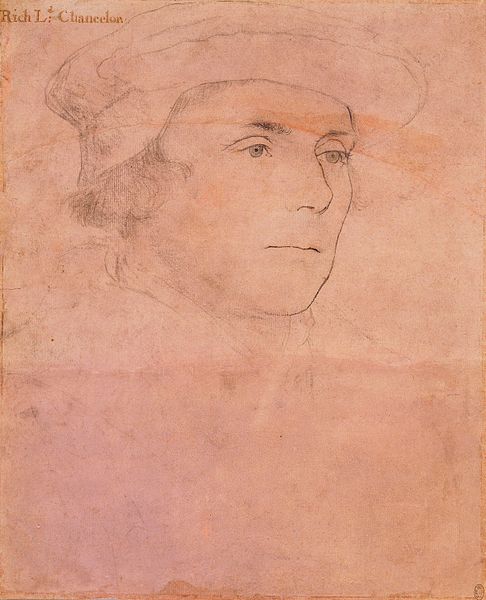 |
| Porchester Castle |
Arthur owned a ship that he called the Mary Plantagenet[i]. Little is known about his ownership of the ship, but in September 1533 Arthur’s agent John Cheriton, as instructed by Arthur, sold the ship to one Antonio di Marini in Pisa. At the time of the sale the Mary Plantagenet carried ordnance loaned from Porchester Castle by Arthur.
Antonio di Marini failed to give sureties for the ordnance which was to cause some problems for Cheriton. The sale of the ship was complicated in that Thomas Totyn (or Gyllam), the master of the Mary Plantagenet had borrowed 200 ducats[ii] from the King of Portugal and bound Arthur to repay the monies. Whether di Marini and Totyn were in cahoots is impossible to prove, but at the least they were a pair of wide boys, taking advantage of Cheriton’s naiveté.
John Cheriton was a walking disaster; having sold the Mary Plantagenet to a rogue, he then shipped silks he’d purchased for Honor and her daughters and stepdaughters, on a ship that sank in early 1534, leaving him out of pocket. In April Cheriton disclosed that he had a licence to import several tuns of wine and that he would have sent some to Arthur, but that Arthur’s agent in Weymouth, John Perse would not accept the freight on his ship.
In October 1534 an alarmed Cheriton was writing to Arthur to inform him that the Mary Plantagenet had sunk off Belle Ȋle off the coast of Brittany. On 5th November Cheriton was greatly relieved to be able to tell Arthur that the Mary Plantagenet had arrived in Hampton[iii]. He warned Arthur against taking any monies from di Marini who had been intercepting Arthur’s letters to Cheriton along with issuing calumnies against him.
‘He [di Morini] said in Cadiz that the commission
your lordship gave unto me for this ship was too bad, your lordship’s honour
reserved, for to wipe his shoes; and more, my lord, he carried….privy letters
out of England for the Pope, and had of him a great reward, and he delivered
him the letters at Pisa.’[iv]
Cheriton advised Arthur to make di Marini and Totyn pay well for their false behaviour. There is nothing to show that Arthur got the money he was owed or that the ordnance was returned.
Dealing with Mr Secretary
01.jpg/501px-Cromwell%2CThomas(1EEssex)01.jpg) |
| Thomas Cromwell |
The busy
Cromwell felt that Arthur, as Lord Deputy of Calais, referred trivial matters
to the king unnecessarily. But in his turn Cromwell left many urgent letters
unanswered or his replies were so oblique or ambiguous that it was difficult to
pin him down. Cromwell frequently ignored the contents of previous letters so
he could protest that he did not have all the relevant information and he frequently
rebuked Arthur and the Calais council for failing to keep him informed.
Lisle kept
Cromwell informed of the actions of the countries surrounding the Pale, acting
as an information resource, and in February 1535 wrote;
‘This shall be to advertise
you/ that/ in my information how th’Emperor [Charles] should be ̂in High Almayn [Germany]
with three score thousand men./ And all the Captains of the frontiers here/ be
at Mechlin at a council there./ And further the mariners….is warned that none
shall depart/ and the common bruit is/ they shall row iij galleys in the narrow
sea.’[v]
 |
| Thomas More |
Cromwell,
busy reorganising the country’s political system and enriching himself in the
process, had little time for many of the matters that worried Arthur. But
Husee, on Arthur’s behalf, had men placed in Cromwell’s service, who reported
back to Calais. Paid around £10 per annum[vi] both William Popley,
Cromwell’s man of business, and Ralph Sadler, one of Cromwell’s protégées, both sent information on
Cromwell to Husee. Husee’s agents also included Sir Richard Pollard, the Surveyor General of the Court of Augmentations and Sherriff of Devonshire.
The new state
religion meant that many people were busy accusing others of papistry. If even the Lord Chancellor, Sir
Thomas More, could fall[vii], so could many lesser
people. There were those in Calais only too ready to accuse Arthur, but he had
a friend in the new Archbishop. In April 1535 Cranmer wrote to Arthur;
‘You wrote unto me that you
have been noted a papist by some of my house….and that unworthily, inasmuch as
you have everywhere spoken against the acts and living of the Pope….albeit that
some have partly suspected you to have favoured this….it shall henceforth
enforce me, from time to time, to stand in this behalf for your defence.’[viii]
The Queen’s Fall
 |
| Jane Seymour |
Queen Anne’s
major crime was that she had not provided Henry with the heir he longed for.
She also became something of a termagant, scolding Henry for flirting with her
ladies. In Henry became enamoured with one of Anne’s ladies, Jane Seymour and was eager to be off with the old love and on with the
new. Accusations against Anne were fabricated by Cromwell, eager to assist his
master.
The accused
included Anne’s brother, George, as well as Sir Francis Weston, William Brereton and Mark Smeaton, a musician in Anne’s household. The trials were held
speedily and the evidence unsound. Nevertheless all accused were found guilty
and condemned to death; Henry was in a rush to marry his new love.
Anne’s
executioner was sent to London from Calais, as expertise with a sword was
required and the expertise was not available in England. Archbishop Cranmer had
pronounced Anne’s marriage to Henry void on 17th May. On 19th
May 1536 Husee reported to Arthur;
‘The Lord Rochford [Anne’s
brother], Brereton, Weston and Markes suffered with the axe upon the scaffold
at Tower Hill on Wednesday the xvijth of this instant, which died very
charitably. And Anne the late Queen suffered with sword this day, within the
tower, upon a new scaffold, and died boldly.’[ix]
 |
| Henry VIII |
Henry was
formally betrothed to Jane Seymour on 20th May and they were married
ten days later. Sir John Russell wrote to Arthur extolling Jane’s
virtues calling her;
‘As gentle a lady as ever I
knew, and as fair a queen as any in in Christendom…..when you write to the King
again, tell him that you do rejoice that he is so well matched with so gracious
a woman as she is.’[x]
Among those
caught in the crossfire of Anne’s fall in the spring of 1536 was Sir Henry Norris, Groom of the Stool, who was Arthur’s principal informant and a ‘faithful friend’ of his. Norris had
managed all Arthur’s interests at court. Husee and Arthur were caught up trying
to find a replacement but all attempts failed.
 |
| Richard Rich |
By 1536
Henry was low in cash, he’d wasted the cash surplus left to him by his father,
and now in a move to refill the royal coffers it was proposed to appropriate
the assets of the disestablished Roman Catholic church. The process began in
1534 when the monasteries were visited and their property assessed for their
taxable value; the reports being amalgamated and presented in May 1535.
Most
religious orders no longer provided the religious leadership and care for the
souls of their neighbours that had originally been intended when they were set
up. The cult of relics was widely criticised and was one of
the matters used by Erasmus[xi] to excoriate the venality of the religious
houses practising the sale of ‘relics’.
Henry was more than happy to take up Cromwell’s suggestion
Over 376
monastic houses were dissolved and 80 spared from suppression over the next few
years. Henry made £168,100[xii] in spoils and derived an
annual revenue of £90,280[xiii] from the rent of the
properties. But much of the land was sold at knock-down prices to such persons
as the Lord Privy Seal and one of his men Sir Richard Rich[xiv], chancellor of the Court of
Augmentation.
Bibliography
The Lisle
Letters – Muriel St Clare Byrne, Penguin Books 1985
The Royal
Bastards of Medieval England – Chris Given-Wilson and Alice Curteis, Barnes and
Noble Inc. 1984
The Ebbs and
Flows of Fortune – David M Head, University of Georgia Press 2009
Thomas
Cromwell – Robert Hutchinson, Phoenix 2008
Henry VIII –
Robert Lacey, Weidenfeld & Nicholson and Book Club Associates 1972
The Earlier
Tudors – JD Mackie, Oxford University Press 1992
Six Wives –
David Starkey, Chatto & Windus 2003
The Six
Wives of Henry VIII – Alison Weir, Pimlico 1992
www.en.wikipedia
[ii]
In 2014
the relative: historic standard of living value of that income or wealth is £121,200.00 economic status value of that income or wealth is £3,683,000.00 economic power value of that income or wealth is £49,390,000.00 www.measuringworth.com
[iv]
The Lisle Letters - Byrne
[v]
Ibid
[vi]
In 2014
the relative: historic standard of living
value of that income or wealth is £5,427.00 economic status value of that income or wealth is £178,100.00 economic power value of that income or wealth is £2,413,000.00 www.measuringworth.com
[vii]
Executed on 6th July 1535
[viii]
The Lisle Letters – Byrne
[ix]
Ibid
[x]
The Six Wives of Henry VIII – Weir
[xi]
A friend of Thomas More’s
[xii]
In 2014
the relative: historic standard of living value of that income or wealth is £87,900,000.00 economic status value of that income or wealth is £3,082,000,000.00 economic power value of that income or wealth is £40,510,000,000.00 www.measuringworth.com
[xiii]
In 2014
the relative: historic standard of living value of that income or wealth is £47,210,000.00 economic status value of that income or wealth is £1,655,000,000.00 economic power value of that income or wealth is £21,750,000,000.00 www.measuringworth.com
[xiv]
Who lied at Sir Thomas More’s trial
the £10 pa paid to the spies was about equivalent to a schoolmaster's annual pay.
ReplyDelete